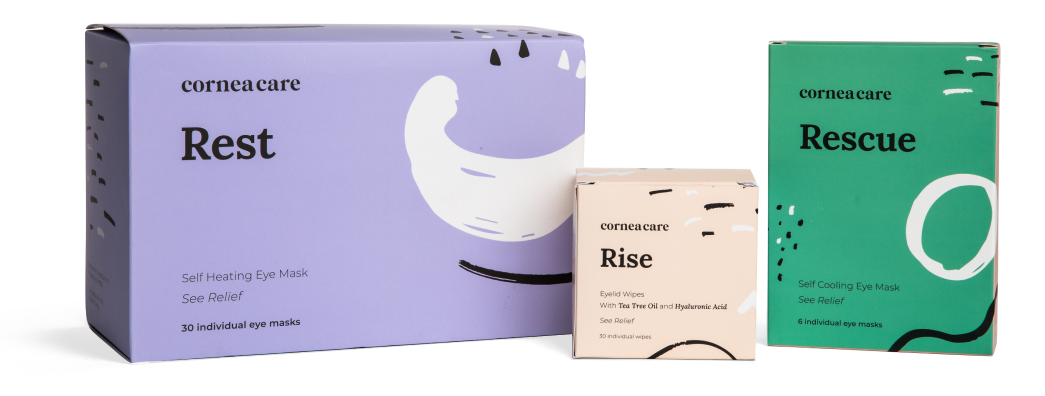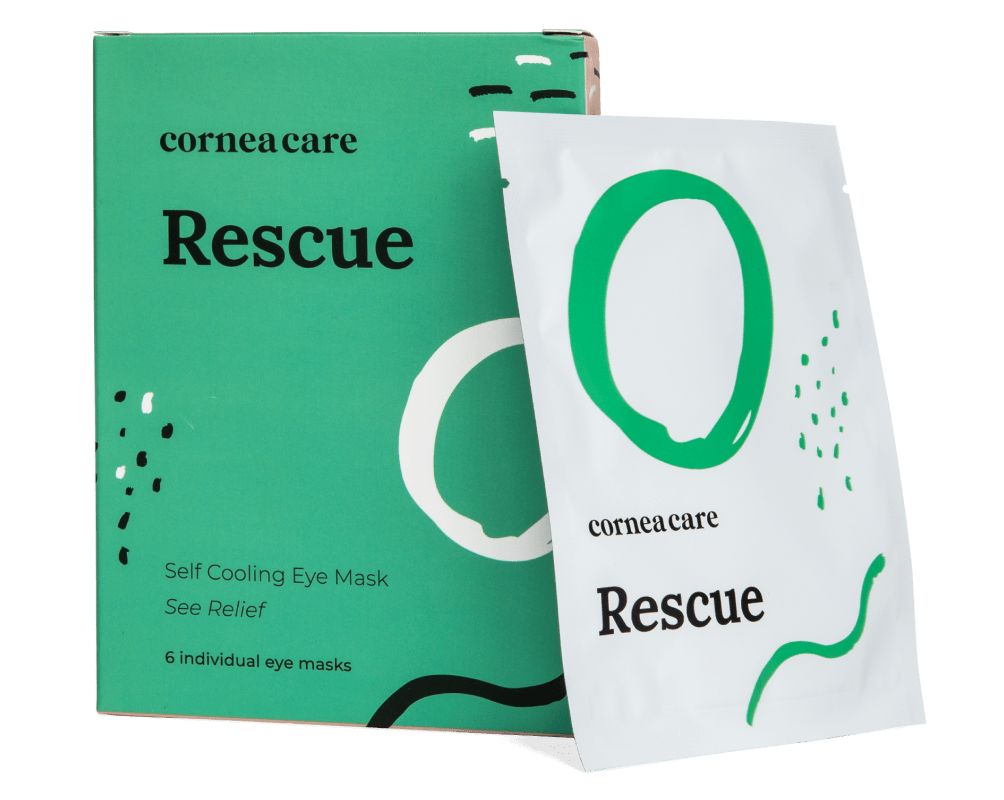A majority of us have had the feeling that there is something in the eye, but nothing is visible when looking in a mirror and the symptoms do not improve by flushing the eye with saline or artificial tears. Still it is difficult to view the small tissue of the eye without the help of a microscope.
Ocular pathologies and conditions of the anterior segment of the eye including the cornea, conjunctiva, or lid margins can result in the feeling that something is in the eye. Most often, light sensitivity, redness, and itching accompany a foreign body sensation. As many conditions may present with the same symptoms, an eye exam of the ocular structures, eyelids and eyelashes is important to make the correct diagnosis and treatment plan.
Key Points
- Many ocular conditions and injuries result in the sensation there is something in the eye.
- Keratitis, blepharitis, and dry eye disease are common diagnoses that present with a foreign body sensation.
- Though treatment depends on the condition, but may include artificial tears, ocular compresses, steroid drops or an antibiotic.
Why Does it Feel Like Something is in my Eye?
An eye doctor uses a large microscope, called a slit lamp, to view the front segment of the eye. The doctor will search for a foreign body, remove an eyelash touching the cornea or find a small piece of mascara lodged underneath the upper lid.
Most often, the feeling that something is in the eye is a symptom of a corneal condition. Dry eye disease, keratitis, and blepharitis all result in a foreign body or gritty sensation, blurred vision, and redness of the eye and lid margins. These conditions will not resolve on their own and may worsen without treatment.
Therefore, if you feel like there is something in your eye, you should seek immediate medical attention by a trained medical professional like an ophthalmologist or optometrist.
Common Causes of a Foreign Body Sensation
Many eye conditions and eye injuries that affect the surface of your eye can result in a foreign object sensation. An eye doctor may ask you about your symptoms and look at the surface of the eye to determine the cause of the foreign body feeling.
Blepharitis
Blepharitis is chronic inflammation of the eyelid margin that may affect any age group, is associated with several systemic conditions including rosacea and seborrheic dermatitis, and is related to other ocular conditions like dry eye, chalazion, conjunctivitis, and keratitis. Common symptoms of blepharitis are a burning sensation, irritation, tearing, light sensitivity, blurred vision, and red eyes. Crusting or flaking may be present on the eyelids.
There are many causes for blepharitis including meibomian gland dysfunction, chronic low-grade bacteria infections of the ocular surface, parasitic infestations like demodex, and inflammatory skin conditions such as atopy and seborrhea.
Treatments include warm compresses, eyelid wipes(hygiene), and over-the-counter lubricating tears. Blepharitis is a chronic medical condition and patients must commit to long-term lid hygiene.1
Exclusive offers
Receive exclusive offers about dry eye health and wellness, courses, and more!

Dry Eye Disease
Dry eye disease is a chronic condition of the corneal surface that can lead to damage to the cornea and the conjunctiva if left untreated. The disease affects 1 in 5 Americans. There are two main subtypes of dry eye disease – aqueous deficiency and evaporative and an individual may have both types.
Aqueous deficiency occurs because of reduced aqueous production from the lacrimal glands but only accounts for a tenth of all dry eye disease. In contrast, evaporative dry eye is due to a deficient tear film lipid layer, which increases tear evaporation. It is caused by meibomian gland dysfunction, and occurs in over 85% of dry eye disease.2
Symptoms of dry eye include dryness, watery eyes, excessive tearing, eye redness, and blurred vision. Common risk factors for dry eye include age, being female, low-humidity environments, systemic medications, and autoimmune diseases. Lastly, wearing contact lenses is also a risk factor for dry eye.3
Most importantly, dry eye disease is a chronic condition and therefore requires long-term management. Treatment usually consists of eyelid hygiene, lifestyle modifications, humidification, tear replacement, improved nutrition, and anti-inflammatory ocular agents.
Check out CorneaCare’s eyelid hygiene products that are clean, convenient and effective against dry eye disease. For tear replacement, check out CorneaCare’s Recover Preservative-Free Artificial Tears.

All Rounder
Eyelid Hygiene Plan 3
Perfect for eye dryness, burning, itching, grittiness, crusting/flaking of eyelashes and inflamed/swollen eyelids. Free shipping 📦.
Try today - $60
Pinguecula
A pinguecula is a benign degeneration of the conjunctiva. It looks like a yellow-white mass on the bulbar conjunctiva. It is common in those exposed to wind, dust, UV light, and work outdoors for long periods of time. Almost all individuals in their eighties show signs of a pinguecula and contact lens wear is an additional risk factor for the development of a pinguecula. Common symptoms are foreign body sensation and itching, but most complaints are cosmetic.4
A pinguecula can progress into a pterygium. A pterygium is a degenerative condition characterized by fibrovascular outgrowth of the conjunctiva over the cornea. Studies demonstrate UV light is the most important trigger. In the beginning, a pterygium is usually asymptomatic, however, dry eye symptoms may be present, such as burning, itching, and/or tearing. Vision worsens and surgical treatment is required as the lesion grows towards the optical zone (pupil). Following surgery, a pterygium may grow again.5
Keratitis
Keratitis is inflammation of the cornea and is characterized by corneal edema (swelling), inflammatory cells, and ciliary congestion (redness). The cause can be both infectious and non-infectious. Keratitis can lead to a corneal ulcer. The most common complaints are redness, pain, irritation, and feeling something is in the eye. Patients may be light sensitive and have reduced vision. Treatment options may include an antibacterial and/or steroid eye drops.6
Corneal Ulcer
A corneal ulcer is a white spot that appears on the cornea and causes extreme eye pain. It is most often due to sleeping in contact lenses overnight. An antibiotic and/or steroid can improve the symptoms. Furthermore, if you wear contact lenses, you should wear your glasses until the eye has healed.
Conjunctivitis
Pink eye, also called conjunctivitis, is the most common reason for a red eye in eye care. Conjunctivitis is inflammation or infection of the outer part of the eyeball and the inner eyelid, called the conjunctiva. The three most common types of conjunctivitis are viral, allergic, and bacterial.7 Artificial tears and cold compresses may improve the look and feel of eyes with conjunctivitis.

Rescue
Cold Compresses
Perfect for sudden flare-ups of eye dryness, pain, burning, and swollen/inflamed eyelids. Free shipping 📦.
Try today - $12
Corneal Abrasion
An abrasion to the cornea can be painful, but usually heals within 1-3 days. As it is healing, it may result in eye irritation or feel like a foreign object is still present in the eye. Corneal abrasions are often caused by a linear object such as a fingernail or tree branch. Typically, abrasions heal on their own, but should be covered with an antibiotic to prevent infection. Ibuprofen, NSAIDs or cycloplegia drops may be recommended to reduce the pain. However, a bandage lens may be used for pain management in an injury that cover 50% of the cornea and should be followed every day by an eye care professional until it resolves.8
Stye
A stye or chalazion is the most common inflammatory condition of the upper eyelid or lower eyelid. They are slowly enlarging, non-tender nodules caused by the inflammation and obstruction of the sebaceous zeis or meibomian glands of the eyelids. If large enough, the stye can rub against the cornea causing the feeling of something in the eye when blinking. Warm compresses are applied to the affected lid for 15 minutes 2 to 4 times per day, followed by a lid massage and eyelid wipes. Overall, most styes resolve within one month.9
Treatment for Something in the Eye
You should seek medical advice immediately if you feel like something is in your eye. Though the treatment for the foreign body sensation depends on the cause, but may include warm compresses, cold compresses, eyelid wipes, artificial tears, an antibiotic (oral or topical) and steroids.
Putting It All Together
Many corneal conditions can cause the sensation there is something in the eye even if there is not anything present in the eye. The cornea has many nerve types and is highly sensitive to any minor eye injuries or corneal conditions. In conclusion, many eye conditions can cause a foreign body sensation. An ocular condition will heal with proper treatment and resolve the feeling that something is in the eye.
What’s Next
Learn to love your eyes! Read more eye health and wellness tips on our blog.



